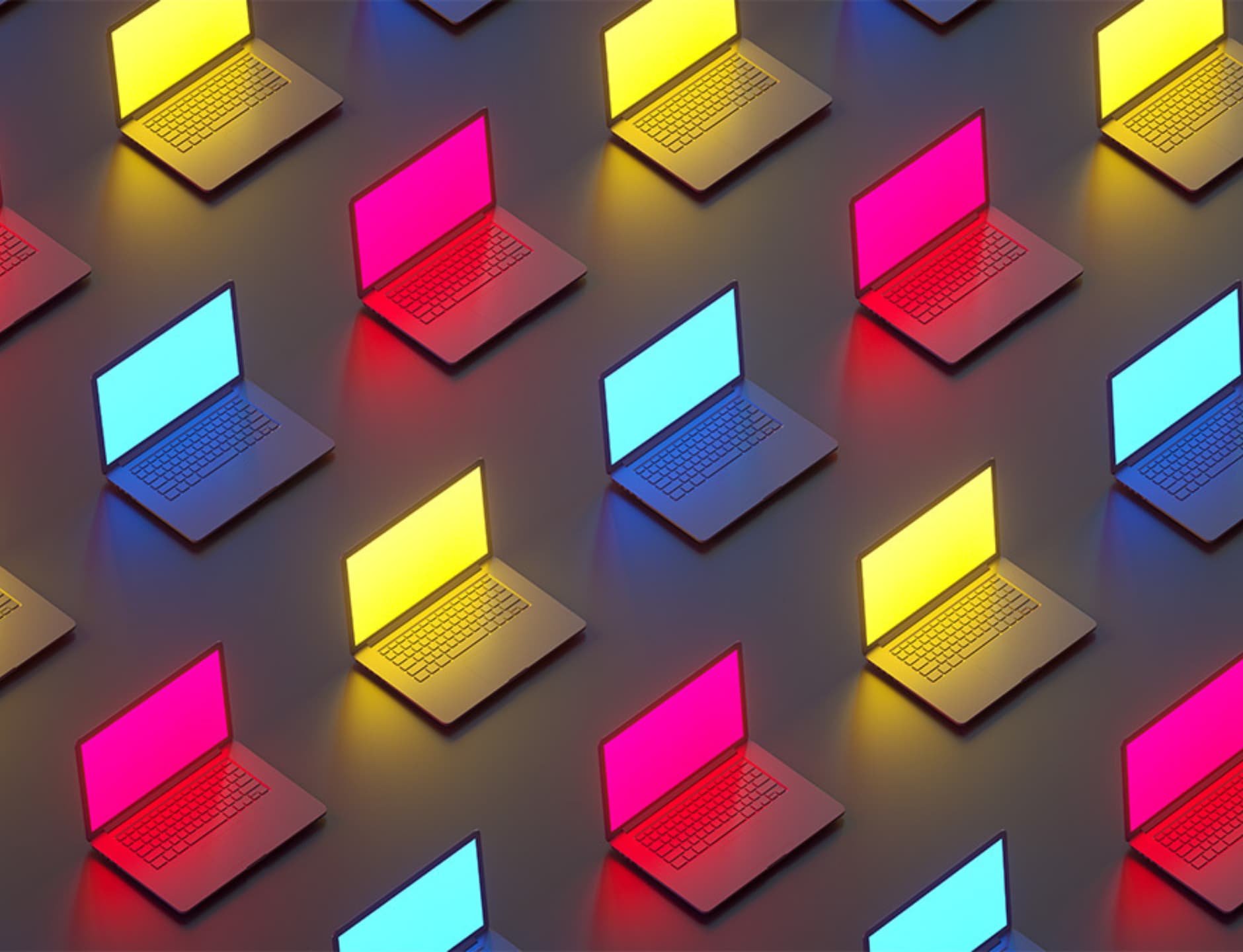Whether showing off the latest drop from a trending designer or sharing a #GRWM for date night—social media users constantly capture moments with their favorite products to share online.
This trend is called user-generated content (UGC), and it’s one of the best ways to show authentic experiences with your brand to a larger audience. That’s because 80 percent of consumers see content posted by other people about a product before purchasing.
Customers, brand loyalists, and employees can publish content for your business—or you can hire creators to produce content for you. Unlike traditional influencers, these digital natives partner with companies using creative briefs to craft content specifically for the brand (with no intention of sharing it on their social channels).
Influencer Marketing Hub found that in 2023, generating UGC was the main objective for influencer marketing campaigns (45%). This type of content is so effective because it works like word-of-mouth advertising. Let’s dig in!
Key takeaways
- UGC creators provide content for brands to share on their marketing channels without attribution
- UGC content focuses more on experience and information rather than entertainment
- UGC content is a cost-effective way to relieve in-house teams and produce a large bank of content for multiple channels
INDEX:
- How UGC creators differ from influencers
- 3 Reasons to work with UGC creators
- Getting started with user generated content types:
- Finding UGC creators to work with
- Paying UGC creators
- 5 must-dos when working with UGC creators
- 3 examples of brands working with UGC creators
- UGC FAQ’s
A quick UGC refresher: showcasing relatable product experiences
Scroll through social media, and you’ll come across content highlighting brand experiences from everyday users. This in-the-moment content lets the viewer see products in action without feeling pressure directly from the brand (like traditional advertising).
Partnering with UGC creators captures the same moments but in a way that aligns with your brand campaigns. These pros produce videos, images, and other media highlighting product benefits, showing products in use, or offering honest product reviews.
UGC creators may accept a product as compensation but often work for flat fee rates. Their content stands out for its relatable, unpolished quality, unlike some highly stylized and Hollywood-like content on social media.
How UGC creator partnerships differ from working with influencers
Undoubtedly, influencers inspired a whole new way to market products and services. Getting access to influencer audiences proves lucrative for brands. However, UGC creators are on the rise as they offer services to produce engaging, informative content for your brand. However, they’re like two sides of the same coin—both are essential for your marketing strategy.
Influencers get paid to create videos, images, or blogs shared across their channels. Brands contract them to produce a specified number of posts in exchange for compensation. They get paid in many ways, including per post, number of actions taken (likes, engagement, clicks, etc.), and even further down the funnel as affiliates.
Brands can purchase licensing rights to influencer content, usually negotiated in the contract.

Heyitsjenna partners with HelloFresh for a paid sponsorship campaign.
UGC creators offer a service to brands. They produce videos and images based on a campaign brief for the sole purpose of brands using it across their marketing channels. These creators don’t rely on their audiences. They typically work on flat fees or will accept products for compensation (usually when new to the business).
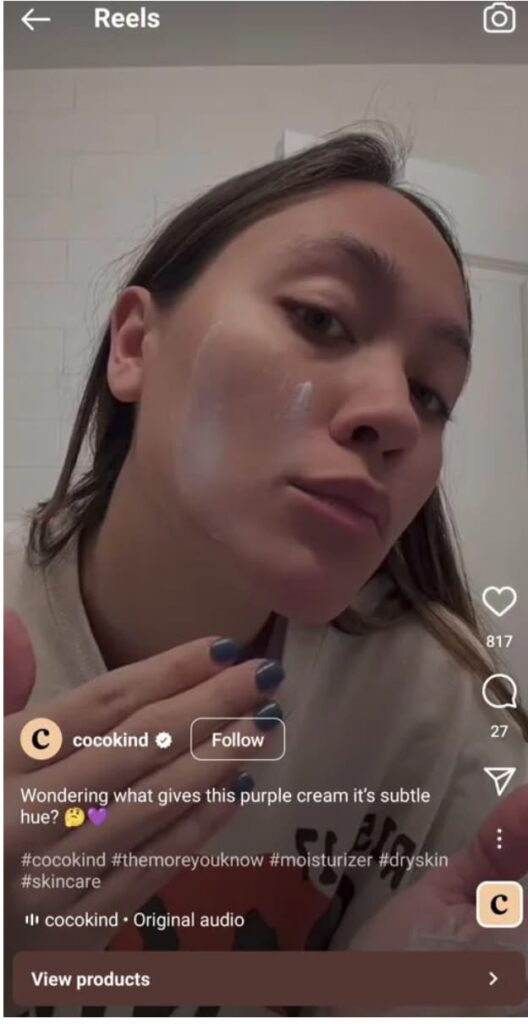
Cocokind partners with UCG creators to demo products for Instagram.
Influencer content is typically more stylized and polished—whereas UGC creators focus more on information and experience than entertainment and aesthetics.
Here’s a quick breakdown of the different partnerships:
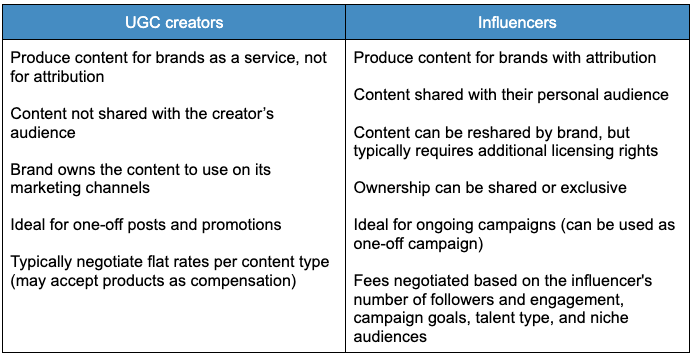
*NOTE: Influencers can also be UGC creators. Brands typically commission this type of work outside of their influencer campaign contract.
3 reasons to work with UGC creators for your next campaign
Consumers no longer trust traditional advertising. When they see content in their social media feed by someone relatable, they’re more likely to pay attention. These raw, unfiltered experiences allow consumers to see themselves using your product.
Here are three more reasons to add UGC to your marketing strategy.
1. A cost-effective complement to influencer campaigns
Influencers play a key role in the success of your marketing strategy. However, the costs add up when you partner with macro and mega creators. Plus, these types of creators are leaning toward longer brand partnerships.
UGC creators typically work on flat fee rates, which are fairly reasonable. You’ll get quality content that feels like an everyday social post without breaking your budget. You can commission UGC creators to produce single videos or hire them for ongoing projects.
2. Take the pressure off your team
Let’s face it. Most in-house marketing teams have no shortage of work. Outsourcing ad creatives gives your team a little breathing room and provides a bank of content to work with. Plus, creators have their finger on the pulse of what’s performing well on social media. It’s like having an audience expert and ethnographer on your side.
Additionally, your team can work with many creators to produce content that speaks to different audience segments. You can quickly build a bank of videos, images, and blogs to repurpose throughout the year.
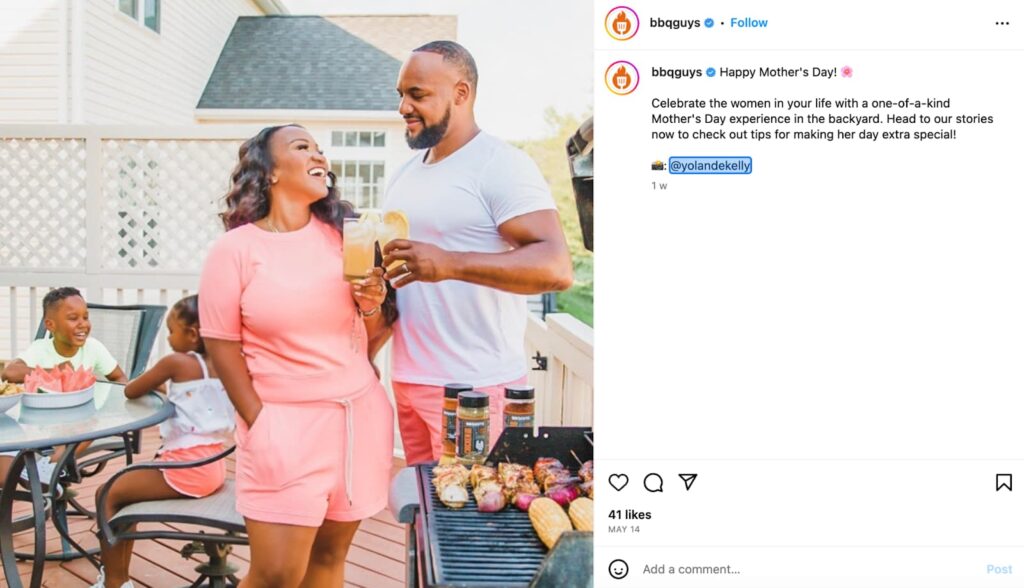
BBQGuys commissioned UGC content from influencer Yolande Kelly to repurpose for their campaign.
3. Positively impact purchasing decisions
People want a more humanized experience when scrolling online. UGC fosters a sense of belonging and builds community around your brand. When shoppers see someone who looks like them using a product, they are more likely to participate in the moment.
Many consumers find that UGC impacts their purchasing decisions nearly nine times more than influencer content and 6.6 times more than branded content.

Meg Reily partners with Bowlero, promoting the hangout as a fun night out via Instagram Stories.
Getting started with user generated content types:
When working with creators, your campaign goals are key in hiring. Often these pros produce specific types of content for brands they align with.
These are some considerations to make when choosing your content type.
– Short-form video content is trending
TikTok turned short-form video content into a main event for social media. Other platforms like Instagram and YouTube are highlighting more shorts than other content.
People love the snackable content they can consume and scroll. Hashtag moments like #GRWM (get ready with me), #ASOM (as seen on me), and #TikTokMadeMeBuyIt showcase products in use and keep consumers on-trend.
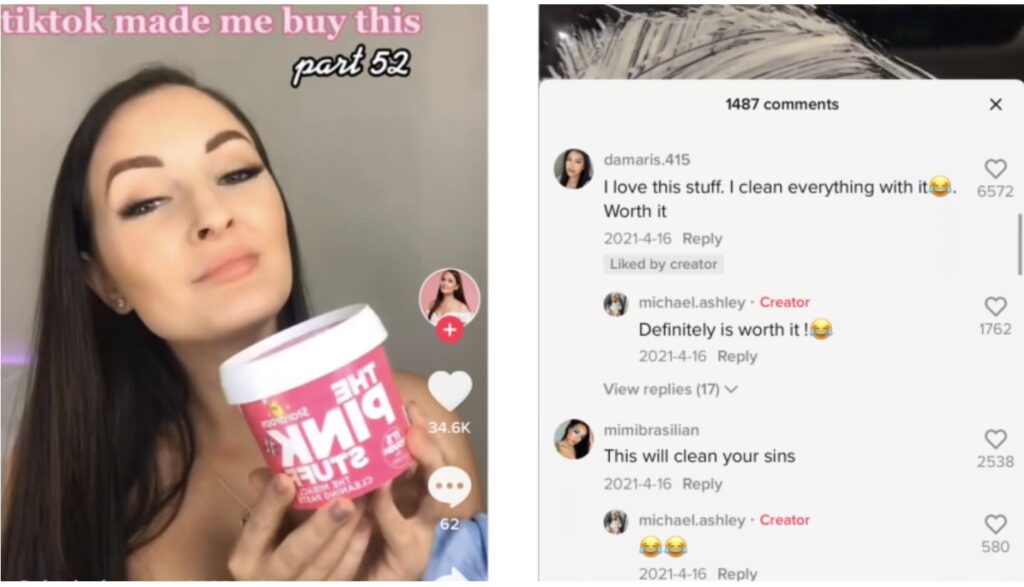
Charley Bourne reshares a video that has more than 250 million views using #tiktokmademebuyit.
– Photos can highlight your product without being “in your face”
People scroll social media to feel inspired, be entertained, or learn something new. When your brand posts images from people in their everyday lives, it appears more native in users’ feeds.
Instagram was designed for photo sharing, and content that captures people in the moment performs well here.
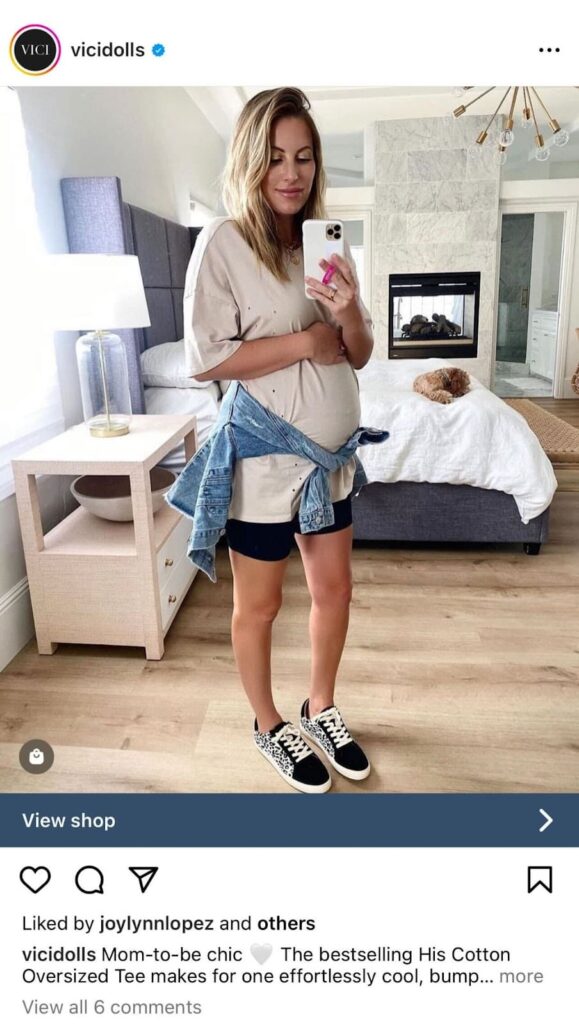
Vici Collections works with UGC creators to show off their personal style.
– Reviews can bring viewers along for the experience
Candid reviews from users experiencing the product while filming works like word-of-mouth advertising. These long-form videos typically show the creator during the purchasing process all the way through the product experience—and often perform best on YouTube and Facebook.
Daymon Patterson is world famous for his foodie reviews, with some videos boasting more than 11 million views. He’s hilarious, engaging, and drives a ton of community around his love of food.
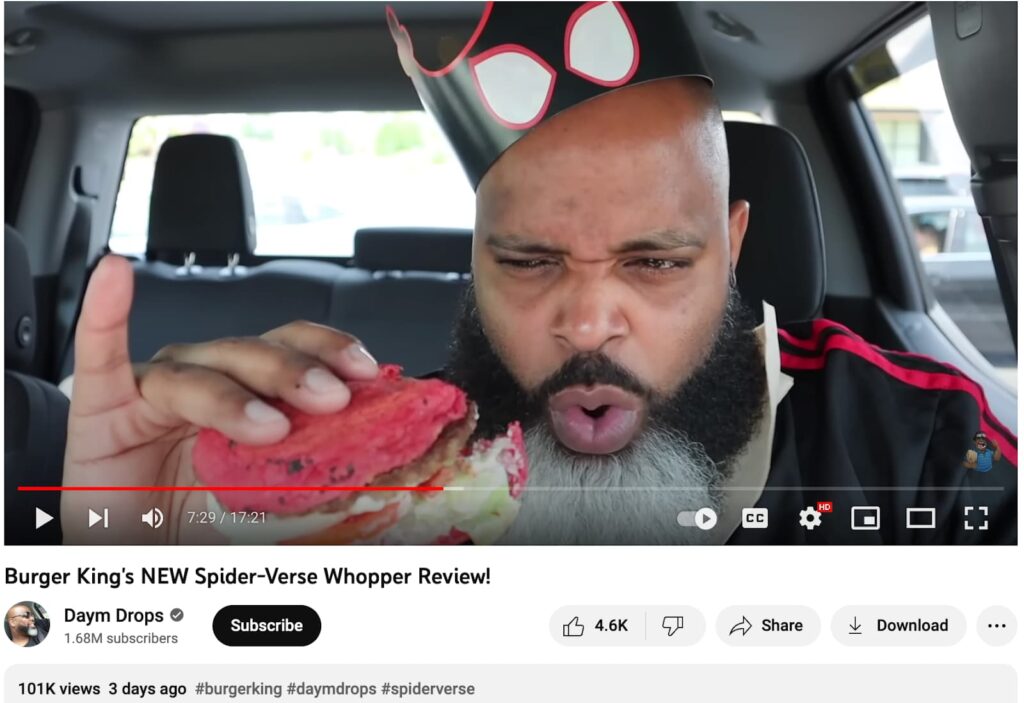
Daymon Patterson’s hilarious food reviews drive millions of views for brands.
Finding and hiring UGC creators for your brand
Finding your creator match begins by identifying the type of content you want to create and the platform you wish to post on. You can then search that specific platform for “UGC creator” plus your “category.”
You can also use explore features on Instagram or TikTok to find creators in your niche. Consider your audience and the type of creators who would resonate with them. Look to work with a diverse group of creators so your content is as inclusive as possible.

Search for UGC creators using specific keywords on the platforms that perform well for your brand.
Alternatively, working on a Partnership Management Platform allows you to discover, engage, and recruit creators opted into their user database. These databases have AI search capabilities that dial in the exact creators you want to commission while providing insights into their performance before you engage them.
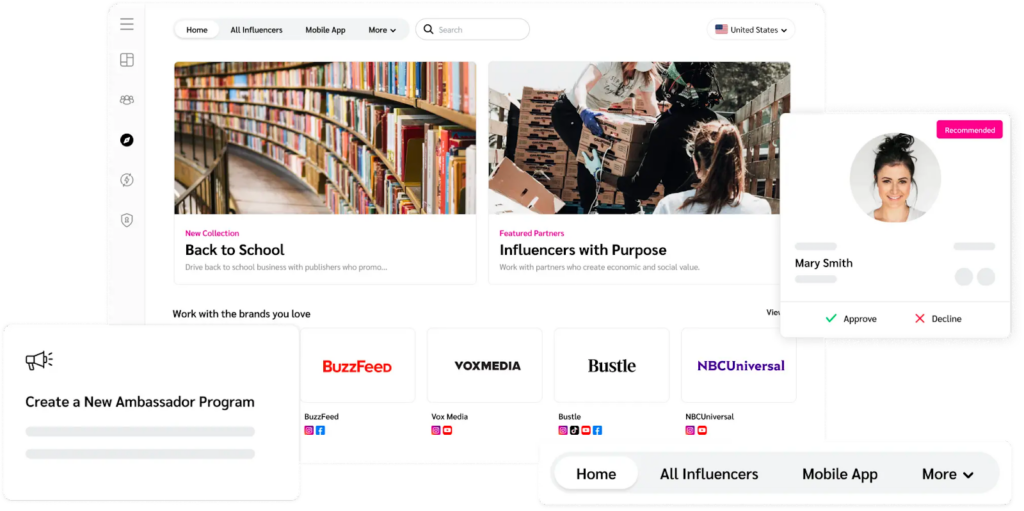
Impact.com’s Marketplace gives you direct access to top global creators.
Paying a UGC creator their worth
In an interview with Business Insider, creator Kristen Bousquet recommends that creators charge at least $100 per image and $300 per video. This TikTok video by @blogginwithzara says the average range is from $80 to $150 per video. But, other more experienced creators may charge upwards of $500 for their hard work.
Before you hire UGC creators, consider your brand’s budget and establish campaign goals. Talk to creators about your goals and brief them on the project before asking about rates. It’s easier for creators to give you quotes once they understand the project scope.
5 must-dos when working with UGC creators
It takes two parties to make a successful campaign. Once you’ve found your candidates, follow these five steps for smooth sailing:
1. Clearly define your goals and expectations
Determine the type of content, the format, and production timeline. Provide a detailed creative brief, and offer a kick-off call to review project details before starting.
2. Sign a contract
Before you begin the campaign, agree on key deliverables, compensation, and content usage terms. Work with your legal team to provide a formal contract that clearly defines the terms of your agreement.
3. Share branding resources
Provide creators with messaging frameworks, branding guidelines, and other style guides to ensure the content aligns. Create a mood board with different visuals to give them a sense of the look and feel you’re going for.
Once you share your ideas and offer guidelines, let creators create. One of the most important aspects of creator relationships is giving your partners the freedom to work in their zone of genius.
4. Track performance
Identify the key performance indicators (KPIs) related to engagement, reach, impressions, and conversions you want to track. Establish a reliable system you can refer to and keep your creators in the loop so they can produce more high-performing content.
5. Provide feedback
Check in with creators to ensure the content meets your expectations and aligns with your brand. This may include sharing constructive feedback, offering guidance, and answering questions.
2 examples of brands that are winning with UGC creators
Looking for some inspiration on how to start working with UGC creators? Here are three brands that are doing it right.
1. Glossier
Direct-to-consumer (DTC) beauty brand Glossier regularly works with creators to share photos and videos of how they use Glossier products in their everyday lives. Each video appears to be shot on a smartphone and isn’t refined –– instead, it captures a moment in the creator’s daily routine.
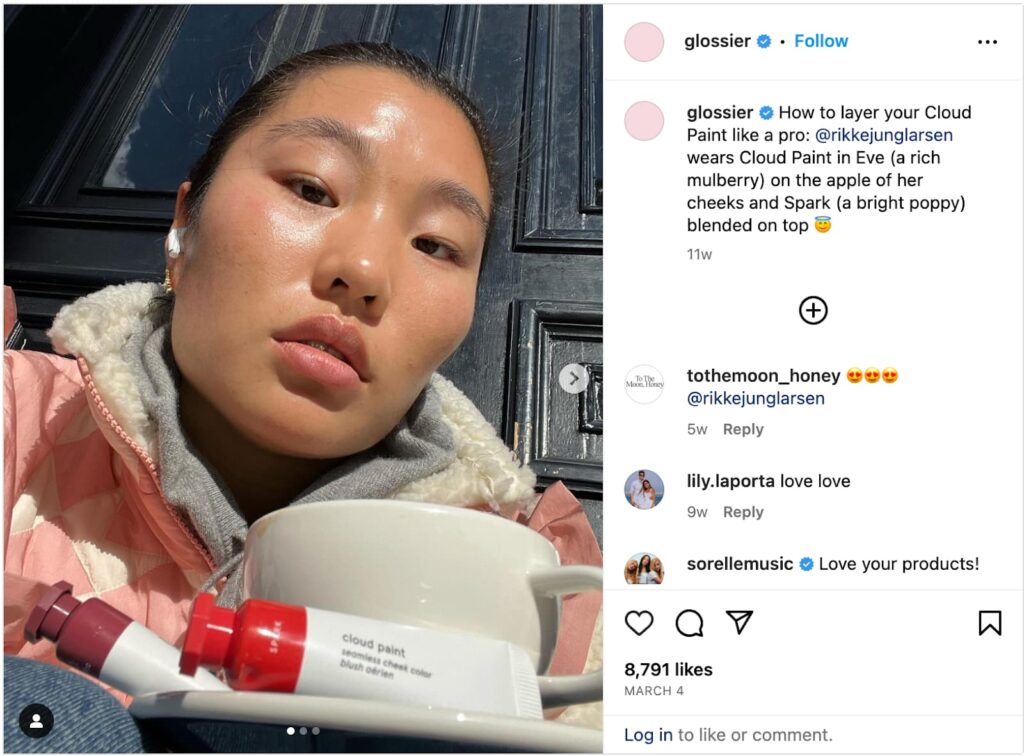
Source: Glossier
This authentic approach has helped the brand build a loyal community of customers. Glossier also uses influencer marketing across its social media accounts. The polished influencer style and authentic UGC content work well for Glossier’s audience.
2. Adobe
Some of Adobe’s products can be complex for the average user, making it hard to visualize their use cases without seeing them in action.
Adobe features visuals created by its customers to highlight its software capabilities while strengthening its community.
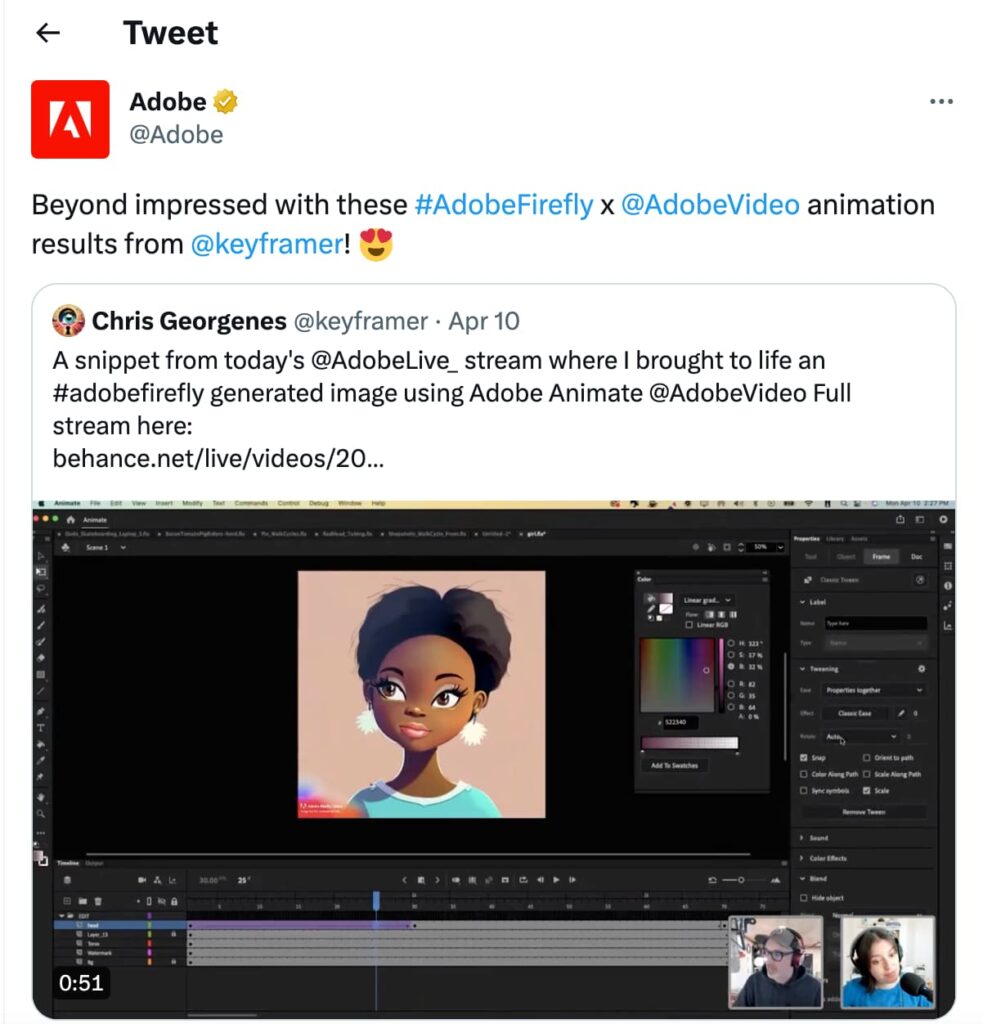
Source: Twitter
Key takeaway: Partner with UGC creators to develop high-quality UGC your audience loves
More cost-effective than macro- and mega-influencers and in-house content creation, UGC creators provide a top solution for brands looking to deliver authentic and relatable content. The key to success is to provide creators with clear expectations and guidelines while giving them the freedom to get creative.
Want to partner with UGC creators that deliver a huge return on investment (ROI)? Learn more about building authentic brand trust with creators.
Keep on learning with these additional resources:
- Working with YouTube influencers [6 pro tips for success]
- How partnerships fuel revenue growth during economic uncertainty
- Does affiliate marketing work for B2B? [ + enterprise companies winning with this channel]
FAQ: UGC creators
UGC creators make money by charging for sponsored posts. Brands pay UGC creators to make authentic content that resonates with their target audience. Some UGC creators may receive compensation through free products and samples.
Influencers and UGC creators take different approaches to content creation and distribution. Influencers usually create relevant content and share it with their audience.
The best way to find UGC clients is to sign up for impact.com’s Marketplace. Here it’s easy to match with brands that match your content creation style. The platform makes it easy to connect with new clients, get paid faster, and generate revenue from existing and new content partnerships.
